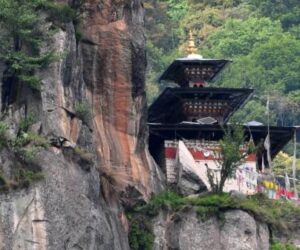
Trashiyangtse
Trashi yangtse one of the newly district in Bhutan was established as a distinct district in 1992 and spans through 1,437 sq. km of subtropical and alpine forests. With its wealth of natural, historical and cultural resources, the region is center of paper making and the art of making wooden cups and bowls. Situated at an elevation of 1750 m-1880 m from sea level, host home for many distinctive wildlife and vegetation.
Trashi yangtse is an ethnically and culturally diverse district where the inhabitants include Yangtseps, the regions indigenous dwellers, Tshanglas, (Bramis from Tawang), Khengpas (from Zhemgang and Kurtoeps from Lhuentse) hence sharing different cultures. This rich cultural tapestry has resulted in an interesting mix of languages and cultural practices in the region. With its rich content of natural resources the people of the region have developed incredible skill at woodworking and paper making. It contains a major art school, the School of Traditional Arts, which is a sister school of the School of Traditional Arts in Thimphu and teaches six forms of art; painting, pottery, wood sculpture, wood-turning, lacquer-work and embroidery.
Trashi yangtse district is home to some of the country’s important protected areas. It contains the Kulong Chhu Wildlife Sanctuary and Bumdeling Wildlife Sanctuary. Bumdeling Sanctuary covers the northern half of Trashi yangtse substantial portions of neighbouring districts probably a home to flora and faunal species.
Sightseeing in Trashiyangtse

Chorten Kora
View More
Gom Kora
View More
Trashiyangtse Dzong
View More
Bomdelling wildlife sanctuary
View More
Institute for Zorig Chusum
View More
Dechenphodrang Ney
View More
Pemaling Ney
View More
Gongza Ney and Gonpa
View More
Bhutan National Futter fly
View More
Omba Ney
View More